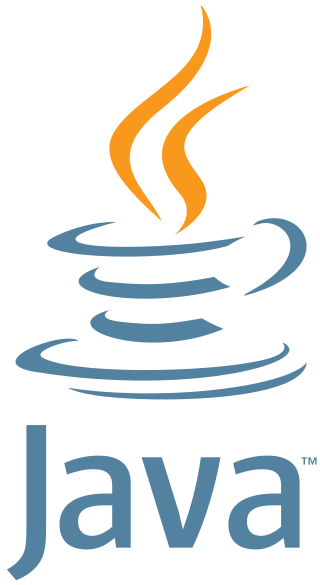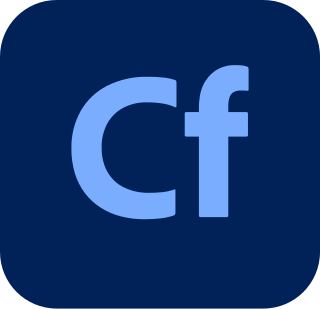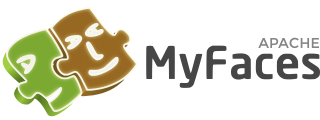Related Research Articles
Active Directory (AD) is a directory service developed by Microsoft for Windows domain networks. Windows Server operating systems include it as a set of processes and services. Originally, only centralized domain management used Active Directory. However, it ultimately became an umbrella title for various directory-based identity-related services.

Java is a high-level, class-based, object-oriented programming language that is designed to have as few implementation dependencies as possible. It is a general-purpose programming language intended to let programmers write once, run anywhere (WORA), meaning that compiled Java code can run on all platforms that support Java without the need to recompile. Java applications are typically compiled to bytecode that can run on any Java virtual machine (JVM) regardless of the underlying computer architecture. Although its syntax is similar to that of C and C++, the Java language has fewer low-level facilities than either of them. The Java runtime provides dynamic capabilities that are typically not available in traditional compiled languages.

SOAP is a messaging protocol specification for exchanging structured information in the implementation of web services in computer networks. It uses XML Information Set for its message format, and relies on application layer protocols, most often Hypertext Transfer Protocol (HTTP), although some legacy systems communicate over Simple Mail Transfer Protocol (SMTP), for message negotiation and transmission.
Jakarta Enterprise Beans is one of several Java APIs for modular construction of enterprise software. EJB is a server-side software component that encapsulates business logic of an application. An EJB web container provides a runtime environment for web related software components, including computer security, Java servlet lifecycle management, transaction processing, and other web services. The EJB specification is a subset of the Java EE specification.
Jakarta Server Pages is a collection of technologies that helps software developers create dynamically generated web pages based on HTML, XML, SOAP, or other document types. Released in 1999 by Sun Microsystems, JSP is similar to PHP and ASP, but uses the Java programming language.

A Jakarta Servlet, formerly Java Servlet is a Java software component that extends the capabilities of a server. Although servlets can respond to many types of requests, they most commonly implement web containers for hosting web applications on web servers and thus qualify as a server-side servlet web API. Such web servlets are the Java counterpart to other dynamic web content technologies such as PHP and ASP.NET.
XML-RPC is a remote procedure call (RPC) protocol which uses XML to encode its calls and HTTP as a transport mechanism.
Distributed Component Object Model (DCOM) is a proprietary Microsoft technology for communication between software components on networked computers. DCOM, which originally was called "Network OLE", extends Microsoft's COM, and provides the communication substrate under Microsoft's COM+ application server infrastructure.

Apache Tomcat is a free and open-source implementation of the Jakarta Servlet, Jakarta Expression Language, and WebSocket technologies. It provides a "pure Java" HTTP web server environment in which Java code can also run. Thus it is a Java web application server, although not a full JEE application server.

Microsoft IIS is an extensible web server created by Microsoft for use with the Windows NT family. IIS supports HTTP, HTTP/2, HTTP/3, HTTPS, FTP, FTPS, SMTP and NNTP. It has been an integral part of the Windows NT family since Windows NT 4.0, though it may be absent from some editions, and is not active by default. A dedicated suite of software called SEO Toolkit is included in the latest version of the manager. This suite has several tools for SEO optimization with features for metatag / web coding optimization, sitemaps / robots.txt configuration, website analysis, crawler setting, SSL server-side configuration and more.

Adobe ColdFusion is a commercial rapid web-application development computing platform created by J. J. Allaire in 1995. ColdFusion was originally designed to make it easier to connect simple HTML pages to a database. By version 2 (1996) it had become a full platform that included an IDE in addition to a full scripting language.
Remote Desktop Protocol (RDP) is a proprietary protocol developed by Microsoft Corporation which provides a user with a graphical interface to connect to another computer over a network connection. The user employs RDP client software for this purpose, while the other computer must run RDP server software.
Microsoft Message Queuing (MSMQ) is a message queue implementation developed by Microsoft and deployed in its Windows Server operating systems since Windows NT 4 and Windows 95. Windows Server 2016 and Windows 10 also includes this component. In addition to its mainstream server platform support, MSMQ has been incorporated into Microsoft Embedded platforms since 1999 and the release of Windows CE 3.0.
The Central Authentication Service (CAS) is a single sign-on protocol for the web. Its purpose is to permit a user to access multiple applications while providing their credentials only once. It also allows web applications to authenticate users without gaining access to a user's security credentials, such as a password. The name CAS also refers to a software package that implements this protocol.
Open Network Computing (ONC) Remote Procedure Call (RPC), commonly known as Sun RPC is a remote procedure call system. ONC was originally developed by Sun Microsystems in the 1980s as part of their Network File System project.

JSP Model 2 is a complex design pattern used in the design of Java Web applications which separates the display of content from the logic used to obtain and manipulate the content. Since Model 2 drives a separation between logic and display, it is usually associated with the model–view–controller (MVC) paradigm. While the exact form of the MVC "Model" was never specified by the Model 2 design, a number of publications recommend a formalized layer to contain MVC Model code. The Java BluePrints, for example, originally recommended using EJBs to encapsulate the MVC Model.

GlassFish is an open-source Jakarta EE platform application server project started by Sun Microsystems, then sponsored by Oracle Corporation, and now living at the Eclipse Foundation and supported by OmniFish, Fujitsu and Payara. The supported version under Oracle was called Oracle GlassFish Server. GlassFish is free software and was initially dual-licensed under two free software licences: the Common Development and Distribution License (CDDL) and the GNU General Public License (GPL) with the Classpath exception. After having been transferred to Eclipse, GlassFish remained dual-licensed, but the CDDL license was replaced by the Eclipse Public License (EPL).

Apache MyFaces is an Apache Software Foundation project that creates and maintains an open-source JavaServer Faces implementation, along with several libraries of JSF components that can be deployed on the core implementation. The project is divided into several sub-projects:
Metro is a high-performance, extensible, easy-to-use web service stack. Although historically an open-source part of the GlassFish application server, it can also be used in a stand-alone configuration. Components of Metro include: JAXB RI, JAX-WS RI, SAAJ RI, StAX and WSIT. Originally available under the CDDL and GPLv2 with classpath exception, it is now available under Eclipse Distribution License
The JBoss Enterprise Application Platform is a subscription-based/open-source Java EE-based application server runtime platform used for building, deploying, and hosting highly-transactional Java applications and services developed and maintained by Red Hat. The JBoss Enterprise Application Platform is part of Red Hat's Enterprise Middleware portfolio of software. Because it is Java-based, the JBoss application server operates across platforms; it is usable on any operating system that supports Java. JBoss Enterprise Application Platform was originally called JBoss and was developed by the eponymous company JBoss, acquired by Red Hat in 2006.
References
- ↑ "Technology & Planning Organizational Website". Archived from the original on August 4, 2007. Retrieved July 29, 2007.
- ↑ "Authentication and Single Sign-on Using Java Technologies, Sun Products & Solutions" (PDF). Retrieved July 29, 2007.
- ↑ "Master of his Domain, Rumpus Magazine" (PDF). Retrieved July 29, 2007.[ permanent dead link ]
- ↑ "JSTL Specification". Archived from the original on August 24, 2007. Retrieved July 29, 2007.
- ↑ "JSP Specification". Archived from the original on August 10, 2007. Retrieved July 29, 2007.
- ↑ "JAX-RPC Specification". Archived from the original on September 30, 2007. Retrieved July 29, 2007.
- ↑ "JavaServer Faces Specification". Archived from the original on August 16, 2007. Retrieved July 29, 2007.
- ↑ No Eclipse of Sun's Product, Business Line, March 31, 2004.
- ↑ M2 Presswire, Manning Publications, October 31, 2001.
- ↑ Dance, Gabriel; Jackson, Tom. "Rock-Paper-Scissors: You vs. the Computer". www.nytimes.com. Retrieved 2023-10-18.
- ↑ "California Law Review 2005-06 Masthead". Archived from the original on August 26, 2007. Retrieved July 29, 2007.
- ↑ "Dean Stands in for Dean at Commencement, UC Berkeley Press Release". Archived from the original on July 7, 2007. Retrieved July 29, 2007.
- 1 2 3 "Shawn Bayern Faculty Biography, Duke University". Archived from the original on 2007-12-20.
- ↑ Institute, The American Law. "Members Elected December 2017". American Law Institute. Retrieved 2023-10-18.
- ↑ Bayern, Shawn (2023). The Analytical Failures of Law and Economics. Cambridge: Cambridge University Press. ISBN 978-1-009-15921-0.
- ↑ Bayern, Shawn (2021). Autonomous Organizations. Cambridge: Cambridge University Press. ISBN 978-1-108-83993-8.